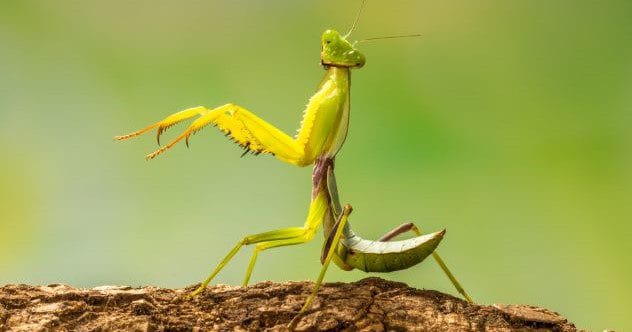Introduction
Ever wondered if your favorite celebrity has a creature counterpart? It’s more common than you think! Scientists often honor famous people by naming newly discovered species after them. This quirky tradition not only shines a spotlight on incredible biodiversity but also gives us a fun way to learn about animals we might otherwise never hear about. From insects to amphibians, let’s dive into 10 fascinating animals named after well-known personalities, showcasing how fame can extend into the wild kingdom.
10. The Harrison Ford Spider, Snake, and Ant
Actor Harrison Ford, known for his role as the snake-fearing Indiana Jones, has ironically lent his name to a few critters. In recognition of his environmental advocacy as vice chair of Conservation International, a species of snake found in Peru was named Tachymenoides harrisonfordi. This particular snake, discovered in the Andes, is harmless to humans and measures about 16 inches long. Researchers hoped this naming would highlight the urgent need to protect new reptile species during the current biodiversity crisis.
But Ford’s namesake menagerie doesn’t stop there. He also has an ant, Pheidole harrisonfordi, and a Californian spider, Calponia harrisonfordi, named in his honor. He found the snake naming “humbling,” proving that even heroes who dislike snakes can appreciate such a gesture.
9. The Beyoncé Horse Fly
Pop superstar Beyoncé Knowles-Carter can add a rather unique honor to her list of accolades: having a horse fly named after her. The Scaptia beyonceae, discovered in Northern Queensland, Australia, caught the eye of researcher Brian Lessard. Why Beyoncé? The fly boasts a distinctive golden-haired abdomen, which Lessard thought bore a striking resemblance to the singer’s famous locks.
Interestingly, this particular fly was collected back in 1981, the same year Beyoncé was born. While often considered a pest in its region, researchers hope that its glamorous new name might just make people think twice before swatting it.
8. The Lady Gaga Wasp
Stefani Germanotta, famously known as Lady Gaga, has inspired not just music and fashion, but also the world of entomology. A newly discovered parasitoid wasp species from Chae Son National Park in Thailand was christened Aleiodes gaga. This naming occurred during a “turbo-taxonomic” study, which used rapid genetic analysis to quickly identify and name specimens collected in Thailand.
The Aleiodes gaga itself is a tiny creature, with the single female specimen found measuring only 5mm. While not much is known about this specific wasp yet, its name contributes to a larger effort led by Dr. Buntika Areekul Butcher to speed up species discovery using DNA barcoding, especially in biodiverse tropical regions like Thailand which are home to many unnamed species.
7. The Donald Trump Burrowing Amphibian and Moth
Former U.S. President Donald Trump has had two species named after him, each with a unique story. First, a small moth, Neopalpa donaldtrumpi, received its name just before he took office. Discovered in California by researcher Vazrick Nazari, the moth’s golden flakes on its head reminded Nazari of Trump’s distinctive hairstyle. Its habitat spans Southern California and Baja California, Mexico, prompting Nazari to hope the naming would encourage conservation efforts for delicate ecosystems.
Later, a blind, burrowing amphibian found in Panama was named Dermophis donaldtrumpi. The naming rights were won at an auction by Aidan Bell, CEO of EnviroBuild, who paid $25,000. Bell stated the creature’s habit of burying its head in the ground was analogous to Trump’s stance on climate change. This amphibian is particularly vulnerable to global warming, and its name aims to draw attention to this pressing issue.
6. The Obama Menagerie
Former U.S. President Barack Obama holds the distinction of having nine different species named in his honor, more than any of his predecessors. This diverse group, found across the globe, reflects various aspects of his presidency and personal heritage.
Among them are the Aptostichus barackobamai, a trapdoor spider from California named for his statesmanship; the Caloplaca obamae, a firedot lichen also from California, honoring his support for science; and the Etheostoma obama, a darter fish from Tennessee, acknowledging his focus on clean energy. An extinct lizard, Obamadon gracilis, was found in Montana. The vibrant Tosanoides obama, a coral reef fish, was named for his expansion of protections for the Papahānaumokuākea Marine National Monument. Further afield, a hairworm parasite in Kenya, Paragordius obamai, nods to his Kenyan heritage, while an African cichlid, Teleogramma obamaorum, recognizes the Obamas’ commitment to science education in Africa. A turtle blood fluke in Malaysia, Baracktrema obamai, and a puffbird, Nystalus obamai, complete this remarkable list.
5. The Ruth Bader Ginsburg Mantis
The late Supreme Court Justice Ruth Bader Ginsburg, a champion of gender equality, was honored with a praying mantis species named Ilomantis ginsburgae. Scientists from the Cleveland Museum of Natural History made this discovery, employing an innovative approach by studying female mantis genitalia, a departure from the common practice of focusing on males.
Researcher Sydney Brannoch chose to name the mantis after Ginsburg due to her powerful advocacy for gender equality and also as a nod to the Justice’s distinctive frilly lace collars, known as jabots, which the mantis’s neck plate somewhat resembles. This naming thoughtfully highlights the importance of considering both sexes in scientific research and pays tribute to Ginsburg’s monumental work in advancing women’s rights.
4. The Bob Marley Crustacean Blood Feeder
The legendary Jamaican singer and guitarist Bob Marley has a small, parasitic crustacean named in his honor: Gnathia marleyi. This gnathiid isopod, a type of blood feeder, was identified by researcher Paul Sikkel during studies of Caribbean coral reefs. The name serves as a tribute to Marley’s immense cultural impact and his Caribbean roots. It was notably the first new species described in the Caribbean in over twenty years.
Gnathia marleyi plays a specific ecological role by feeding on reef fish. Its discovery and study, partly funded by the National Science Foundation, help scientists understand more about parasite-host relationships and disease transmission in vital marine ecosystems like coral reefs.
3. The Elton John Shrimp-Like Crustacean

In 2015, a new species of shrimp-like crustacean discovered in the vibrant Indonesian reefs of Raja Ampat was named Leucothoe eltoni, after the iconic singer Sir Elton John. Researcher James Thomas from Florida’s Halmos College of Natural Sciences and Oceanography chose the name as a personal tribute, citing his lifelong admiration for Elton John’s music.
This tiny crustacean was found living inside another reef invertebrate, a relationship known as “commensal association,” where one organism benefits and the other is not significantly harmed or helped. Interestingly, researchers in Hawaii later found that Leucothoe eltoni had also made its way to their waters, arriving as an invasive species.
2. The Taylor Swift Millipede
Pop music sensation Taylor Swift has a millipede species from the Appalachian Mountains named Nannaria swiftae in her honor. The decision was made by entomologist Derek Hennen of Virginia Tech, who expressed his gratitude to Swift, stating her music was a source of encouragement for him throughout his graduate school studies. These millipedes are ecologically important, playing a key role in decomposition and nutrient cycling within their forest ecosystems.
Despite their ecological importance, millipedes like Nannaria swiftae can be challenging to study as they often hide beneath the soil. The discovery of this species, along with 16 other new millipede species, was the result of an extensive multi-year project spanning 17 eastern U.S. states. These newly identified millipedes have distinct features, including white legs, red and orange spots, and unique claw structures in males.
1. The Bono Spider
Biologist Jason Bond from Auburn University, who seems to have a knack for naming species after notable figures, has identified 33 new species of trapdoor spiders. Among these, one found in California’s Joshua Tree National Park was named Aptostichus bonoi, paying homage to Bono, the frontman of the iconic Irish band U2. The name is particularly fitting, as U2’s seminal 1987 album was titled “The Joshua Tree.”
This continues Bond’s tradition of selecting inspiring namesakes, which also include Angelina Jolie and Stephen Colbert. Trapdoor spiders, common in the southwestern U.S., are known for their clever survival strategy of building camouflaged burrows with hinged “trapdoors” to ambush unsuspecting prey.
Conclusion
Naming newly discovered species after famous individuals is more than just a quirky scientific habit. It’s a way to bring attention to the incredible biodiversity of our planet and the ongoing work of researchers dedicated to understanding and preserving it. Whether it’s a fly with golden hair or a spider from a famed national park, these celebrity namesakes help connect us to the natural world in surprising and delightful ways, reminding us that there’s still so much to discover.
Which celebrity animal naming surprised you the most, or do you know of others? Share your thoughts in the comments below!










